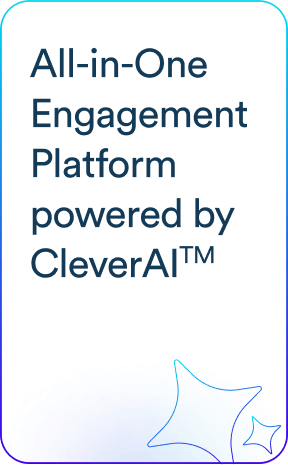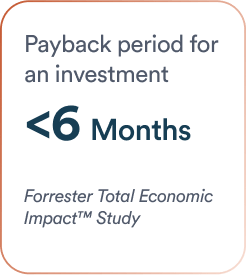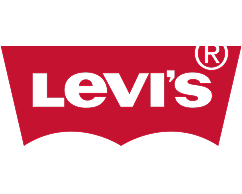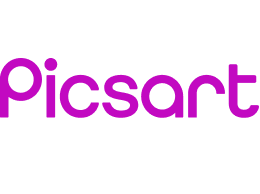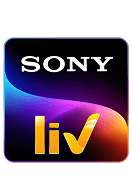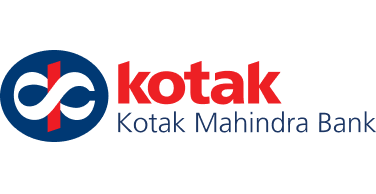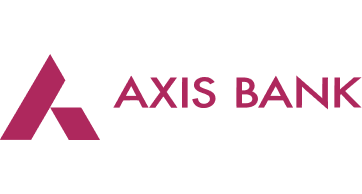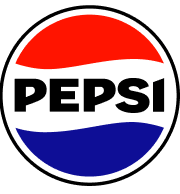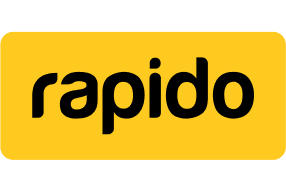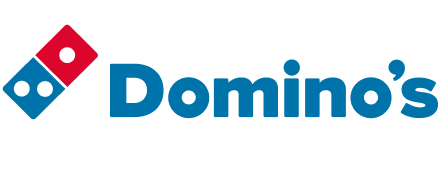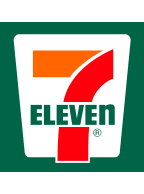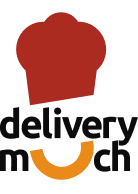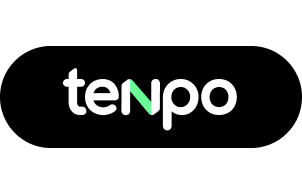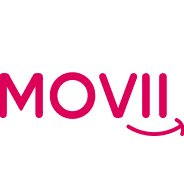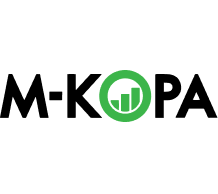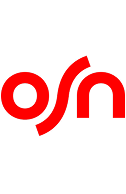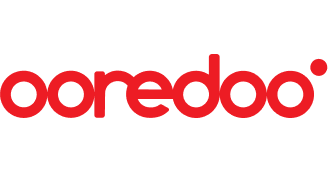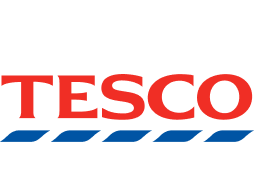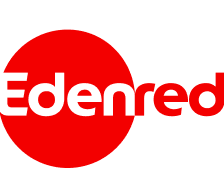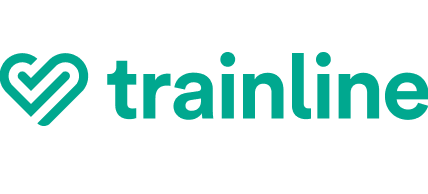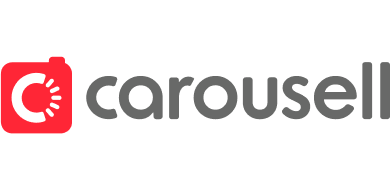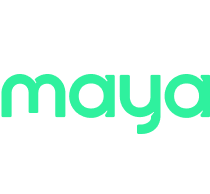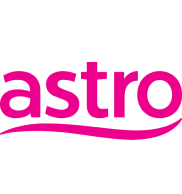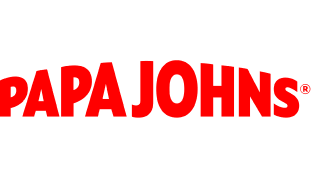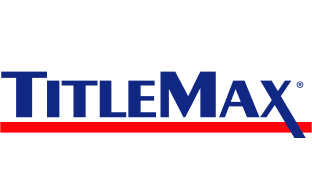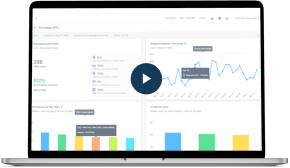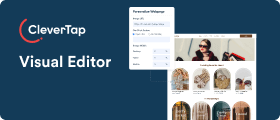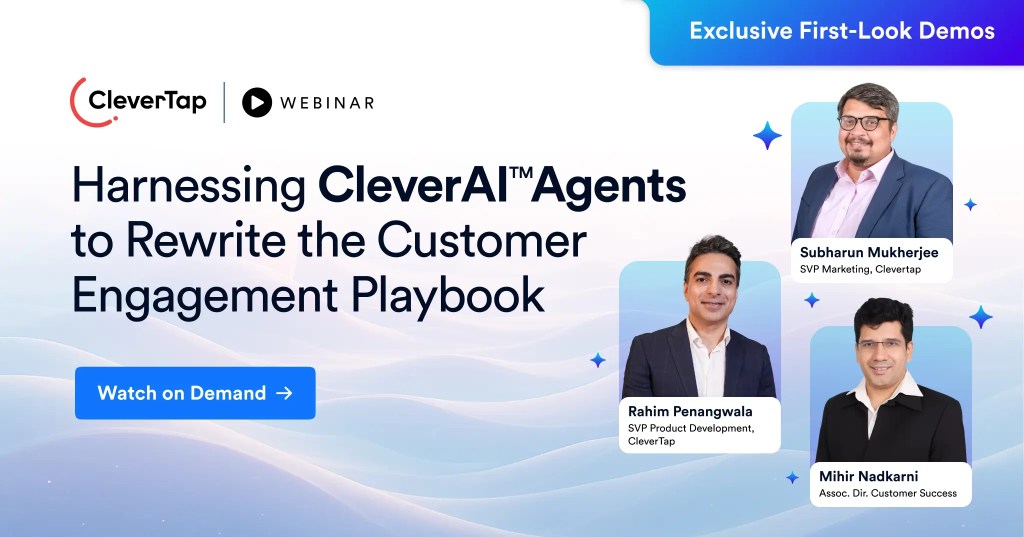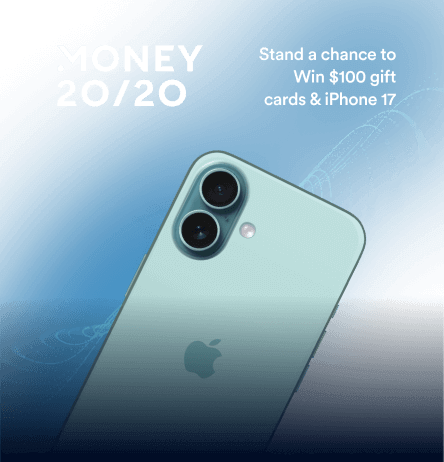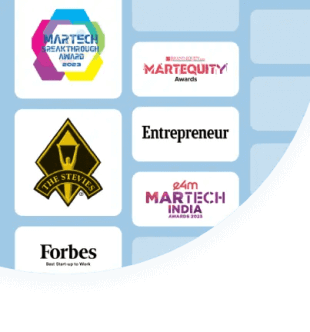Push notifications are an essential tool for businesses looking to engage users and drive conversions. These messages are delivered directly to users’ devices and allow brands to communicate timely information, promotions, and updates.
But sending notifications is only part of the equation. Marketers must track the right push notification metrics to truly drive engagement and conversions.
For example, the push notification click-through rate (CTR) is a key indicator of interest. While the average push notification CTR hovers around 4.6% on Android and 3.4% on iOS*, top-performing brands often exceed these by refining their strategies with data. Along with CTR, it is also important to monitor other performance metrics, such as open rate, opt-in rate, time to open, among others, as each offers valuable insights into user behavior, campaign impact, and overall ROI.
Let’s discuss the significance of push notification metrics in evaluating the success of your push notification strategy. We’ll also talk about how marketers can use these metrics to enhance user engagement and drive better results.
Push Notification Performance Metrics To Track
Your customers receive multiple notifications daily, which can lead to notification fatigue. To stand out and effectively measure the performance of messages, here are the key push notification metrics you need to look out for, ordered by importance:
1. Push Notification Click-Through Rate (CTR)
Push notification CTR measures the percentage of users who click on a push notification after receiving it. It serves as a key indicator of user engagement and reveals how compelling your notification content is. Simply put, the higher the CTR, the better your subscribers are engaged with your content.
Formula
Push notification CTR is calculated using the following formula:
CTR = (Number of clicks / Number of push notifications delivered) * 100
For example, if your campaign delivered 100,000 push notifications and received 3,000 clicks, your CTR would be: (3,000 / 100,000) × 100 = 3%
Push Notification CTR Benchmarks
The overall average push notification CTR across industries is approximately 2.25%. This figure provides a useful benchmark for evaluating campaign performance across various verticals.
The table below shows the average push notification CTR by industry and platform
| Industry | iOS CTR | Android CTR | Average CTR |
| Education | 4.91% | 2.10% | 1.77% |
| Utilities | 4.87% | 2.72% | 2.97% |
| Travel | 2.55% | 1.92% | 1.92% |
| Retail | 2.97% | 2.48% | 3.01% |
| Business & Finance | 2.51% | 2.77% | 2.55% |
| Entertainment | 1.92% | 1.79% | 2.01% |
| Media & Publishing | 1.69% | 1.31% | 1.31% |
| Deals | 1.80% | 1.33% | 1.33% |
| Food | 1.36% | 1.05% | 1.43% |
| Health | 1.61% | 1.61% | 1.60% |
Understanding these push notification CTR benchmarks helps marketers gauge their performance relative to industry standards and make informed decisions about notification strategies. For fintech apps in particular, monitoring fintech push notification CTR against the Business & Finance average can help assess the effectiveness of campaigns targeting users in high-trust, high-stakes contexts.
Apps in the streaming industry can use these benchmarks to evaluate their streaming push notifications, optimizing content alerts and release reminders for higher engagement. You should consider these differences when building push notification strategies for each platform and industry vertical.
2. Push Notification Conversion Rate
Conversion rate is perhaps the most business-critical metric as it measures the percentage of users who complete a specific desired action after interacting with a push notification. This push notification metric provides direct insight into the effectiveness of the notification in driving meaningful user behavior. This includes making a purchase, signing up for a newsletter, completing a profile, and any other valuable action.
Formula
Push notification conversion rate is calculated using the following formula:
Conversion Rate = (Number of users who completed the desired action / Number of users who clicked the notification) * 100
For instance, if 300 users clicked on a notification and 45 of them completed a purchase, your conversion rate would be: (45 ÷ 300) × 100 = 15%
For a more holistic view, you can also measure:
Overall conversion rate = (Number of conversions / Number of notifications delivered) * 100
This metric is particularly valuable because it connects push notification activity directly to business outcomes. By tracking conversion rate over time and across different campaign types, you can:
- Identify which notification strategies drive the most valuable user actions
- Calculate the actual ROI of your push notification campaigns
- Refine your targeting, messaging, and timing to optimize for conversions
- Develop more effective calls-to-action that guide users to complete desired behaviors
3. Push Notification Delivery Rate
Delivery rate measures the percentage of push notifications that were successfully delivered to users’ devices compared to the total number sent. This foundational metric is critical because it indicates whether your notifications are even reaching your audience in the first place. And if notifications aren’t delivered, no other metrics matter.
Formula
Push notification delivery rate is calculated using the following formula:
Delivery Rate = (Number of push notifications delivered / Number of push notifications sent) * 100
For instance, imagine you send out 12,000 push notifications, but only 11,400 are successfully delivered. Your delivery rate would be: (11,400 ÷ 12,000) × 100 = 95%
A low delivery rate signals fundamental issues that need immediate attention. It could indicate technical problems with your notification service, a large number of uninstalled apps in your database, or users actively blocking your notifications. Regularly monitor this metric and promptly investigate any significant drops to ensure the technical foundation of your push notification strategy remains solid.
Curious why push notifications go undelivered and what to do about it? Read our quick guide to learn how to fix it.
4. Push notification Open Rate
Push notification open rate refers to the percentage of users who open a push notification after receiving it. Unlike email open rates, which are tracked through image loads, push notification opens are counted when users tap on the notification to view it in full or directly engage with the app through the notification.
Formula
Push notification open rate is calculated using the following formula:
Open Rate = (Number of notifications opened / Number of notifications delivered) * 100
Let’s consider a case where you delivered 8,500 notifications, and 1,700 of them were opened. Your push notification open rate would be: (1,700 ÷ 8,500) × 100 = 20%
As per CleverTap’s push notification report, the open rate benchmark varies by industry and also by how relevant or contextual the messaging is. Contextual push notifications outperform generic push notification campaigns because they are specifically targeted to a segment of users. As a result, contextual campaigns achieve an average push notification open rate of 16.3%, compared to just 4.7% for generic campaigns.
Open rates reflect the effectiveness of timing and preview content in capturing user attention. Tracking open rates alongside push notification CTR helps distinguish between users who view notifications but choose not to engage further.
5. Push Notification Opt-In Rate
The opt-in rate shows the percentage of users who have consented to receive your push notifications compared to the total number of users prompted. This push notification metric is crucial as it represents your addressable audience size and indicates users’ initial receptiveness to your communications.
Formula
Push notification opt-in is calculated using the following formula:
Opt-In Rate = (Number of users who opted in / Total number of users prompted) * 100
For instance, if you prompted 2,500 users to enable notifications and 1,375 accepted, then your opt-in rate would be: (1,375 ÷ 2,500) × 100 = 55%
According to CleverTap’s benchmark report, Android devices exhibit a significantly higher mobile push notification opt-in rate of 91%, primarily due to automatic enrollment on many versions. In contrast, iOS push notifications see a lower opt-in rate of around 44%, as users must explicitly grant permission through system prompts.
For web push notifications, opt-in rates can vary more widely depending on browser behavior and when permission prompts are shown during the user journey.
Tracking opt-in rates helps with:
- Understanding audience receptiveness to your communications
- Identifying the best times in the user journey to request notification permissions
- Testing whether additional incentives or information are needed to convince users
- Determining which app screens or web pages work best for permission requests
The push notification opt-in rate is a leading indicator of notification campaign potential. A higher opt-in rate means a larger audience for your messages and typically indicates stronger user trust in your brand communications.
6. Push Notification Revenue Rate
Revenue rate measures the direct financial impact of your push notification campaigns by tracking how much revenue is generated from users who engage with your notifications. This monetary push notification metric helps quantify the ROI of your push notification strategy and justifies continued investment in this channel.
Formula
Push notification revenue rate is calculated using the following formula:
Revenue Rate = Total revenue generated from push notification campaign / Number of notifications delivered
Let’s assume your campaign generated $2,500 in revenue from 10,000 notifications delivered. In this case, your revenue rate would be: ($2,500 ÷ 10,000) = $0.25 per notification
This comprehensive push metric can be broken down in several ways:
- Revenue per notification: The average amount of revenue generated per individual notification sent
- Revenue per engaged user: The average revenue generated from each user who clicked on a notification
- Campaign ROI: (Total revenue generated – campaign costs) / campaign costs
By tracking the push notification revenue rate, marketers can:
- Directly attribute revenue to specific notification campaigns
- Compare ROI across different marketing channels
- Identify notification types and segments that drive the highest monetization
- Optimize notification content, timing, and targeting to maximize revenue generation
- Calculate exact returns for push notification platform investments
7. Push Notification Success Rate
The success rate of push notifications reflects how effectively they drive user actions post-engagement based on your campaign’s specific goals. This versatile metric is calculated based on whether users completed the particular action a notification was designed to encourage. This includes completing a purchase, signing up for a newsletter, watching a video, or any other designated goal.
Formula
Push notification success rate is calculated using the following formula:
Success Rate = (Number of successful outcomes / Number of push notifications delivered) * 100
Say you delivered 8,000 push notifications and achieved 400 successful actions (like purchases or sign-ups). Your success rate would then be: (400 ÷ 8,000) × 100 = 5%
Several strategies can significantly enhance push notification success rates:
- Personalization: Tailoring messages based on user preferences increases relevance and encourages action. Notifications that offer value or are highly relevant to users’ interests are more likely to be opened.
- Audience Segmentation: Dividing your audience into specific groups allows for targeted messaging that resonates more deeply with each segment.
- Timing Strategies: Sending notifications at times when users are most likely to engage can significantly boost success rates. Tailored send times improve reaction rates by 40%.
- User Engagement: Users who have engaged with your app or brand previously are more likely to open subsequent notifications.
The success rate is particularly valuable because it can be customized to your specific business objectives. This makes it one of the most adaptable push notification metrics for measuring effectiveness across different campaign types and goals.
8. Push Notification Opt-Out Rate
The opt-out rate measures the percentage of users who choose to disable or unsubscribe from your push notifications after initially opting in. This negative signal metric is crucial for understanding user satisfaction and detecting notification fatigue or relevance issues.
Formula
Push notification opt-out rate is calculated using the following formula:
Opt-Out Rate = (Number of users who opted out / Total number of users who received notifications) * 100
Consider a scenario where out of 5,000 users who received notifications, 120 opted out. Your opt-out rate would be: (120 ÷ 5,000) × 100 = 2.4%
Monitoring push notification opt-out rates by segment, campaign type, and frequency can provide valuable insights:
- Identifying which user segments are most sensitive to notifications
- Determining the threshold at which frequency becomes annoying for different user types
- Testing which content types cause users to disengage
- Evaluating the effectiveness of your overall messaging strategy
Reducing opt-out rates is critical to maintain your addressable audience size. A steady increase in opt-outs will gradually erode your ability to reach users through this channel, making this push notification metric crucial for the long-term sustainability of your strategy.
9. Average Time to Open a Push Notification
Time to open measures how long it takes users to open a notification after it has been delivered to their device. This push notification metric provides valuable insight into the urgency and relevance of your message, as well as optimal timing patterns for future campaigns.
Formula
The average time to open a push notification is calculated using the following formula:
Average Time to Open = Sum of time taken by all users to open notifications / Number of opened notifications
For instance, let’s say that the total time users took to open 500 notifications was 25,000 minutes. Then, your average time to open would be: (25,000 ÷ 500) = 50 minutes
The distribution of open times is often more revealing than the average alone:
- Percentage of opens within first 5 minutes (immediate response rate)
- Percentage of opens within first hour (short-term engagement)
- Percentage of opens after 24 hours (delayed engagement)
This push notification metric can help you:
- Determine optimal timing windows for different notification types
- Understand user engagement patterns throughout the day
- Refine messaging to increase perceived urgency when appropriate
- Identify which notification types drive immediate action versus delayed responses
- Set appropriate expiration times for time-sensitive notifications
- Plan follow-up communications based on typical response windows
Read in detail: What is the Best Time to Send Push Notifications?
10. Push Notification View Rate
View rate measures the percentage of notifications that were successfully displayed on the user’s screen, typically while the screen is unlocked and active, but were not necessarily tapped or opened. It reflects the opportunity for visibility and helps assess how well your notifications penetrate the user’s environment.
Formula
Push notification view rate is calculated using the following formula:
View Rate = (Number of notifications viewed / Number of notifications delivered) * 100
Let’s say you delivered 7,800 notifications, and 6,200 were actually viewed by users. In that case, your view rate would be: (6,200 ÷ 7,800) × 100 = 79.5%
This push notification metric is particularly important for understanding:
- The visibility of your notifications within the user’s environment
- Whether your notification preview content is compelling enough at just a glance
- If your timing strategies align with when users are actively checking their devices
- The percentage of delivered notifications that actually have an opportunity to influence users
- Potential technical or visibility issues affecting notification display
The gap between view rate and open rate reveals how many users see but consciously choose not to engage with your notifications. This is a critical insight to refine preview text, timing, and notification design to convert more views into meaningful engagement.
Best Practices for Improving Push Notification CTR and Other Metrics
To improve the performance of your message campaigns, consider these push notification best practices:
1. Segment Your Audience
Dividing your audience based on demographics or behavior allows you to send targeted push messages that resonate with specific groups. This increases both open rates and CTRs and ultimately improves push notification retention by keeping users engaged over time. Use demographic segmentation on users based on age, gender, location, or language preferences.
Group users based on their behavior, such as their in-app actions, purchase history, or engagement level. You can also develop detailed profiles of your ideal customers and tailor messages accordingly. Consider implementing dynamic segmentation to automatically update user segments based on real-time behavior and preferences.
2. Optimize Timing and Frequency
Analyze past campaign data to determine when your audience is most active. Avoid overwhelming users with too many notifications; instead, focus on quality over quantity.
- Study User Activity: Identify peak engagement times for different user segments.
- Consider Time Zones: Ensure notifications are delivered at appropriate local times for global audiences.
- Balance Frequency: Find the sweet spot between staying top-of-mind and avoiding notification fatigue.
- Create a Notification Schedule: Plan your campaigns in advance to maintain a consistent, non-intrusive presence.
3. Utilize Rich Media Content
Incorporating rich media in your notifications can make them more engaging and visually appealing, leading to higher interaction rates and improved push notification CTR.
Make sure to use high-quality images with clear visuals and relevant messaging. You can also include emojis, short videos, and animated GIFs strategically to capture the personality of your messages. Emojis in push notifications improve CTR, and rich formats as a whole improve reaction rates.
Make sure you have tested for compatibility. Test your rich push notifications across different devices and operating systems to ensure they are being displayed correctly.
4. Personalize Notifications
Use customer data to tailor messages based on individual preferences or past behavior. Personalized notifications are more likely to capture attention and drive clicks.
You can address recipients by their first names to create a personal connection and reference past interactions to make the message more relevant.
Past customer data can be used to provide personalized recommendations, such as suggesting products or content based on the user’s preferences and browsing history.
You can also adjust your messaging style to match different user segments or personas. Make use of location-based marketing strategies to send notifications based on the user’s current location or proximity to your business.
5. Experiment With A/B Testing
Regularly test different elements of your push notifications—such as subject lines, content types, and sending times—to identify what works best for your audience. Use insights gained from A/B testing to refine your approach continuously.
- Test Notification Copy: Compare different message lengths, tones, and calls-to-action.
- Experiment With Visual Elements: Test various images, color schemes, and layouts.
- Try Different Send Times: Compare engagement rates for notifications sent at different times of day.
- Test Frequency: Determine the optimal number of notifications to send over a given period.
- Analyze Deep Links: Compare the effectiveness of different in-app destinations for your notifications.
- Use Statistical Significance: Ensure your test results are reliable by using a large enough sample size.
6. Write Engaging Copy
Create notification messages that are clear, concise, and compelling to drive user engagement. A creative push notification can capture attention instantly and stand out in a crowded notification tray, increasing the chances of engagement.
Use action-oriented language with strong verbs and clear calls to action. Consider push notification character limits to keep your messages brief and to align with different devices.
You can try using time-sensitive language to prompt quick responses and clearly communicate the benefit or value proposition to the user. Incorporate push notification power words that evoke emotion or curiosity to increase push CTR and open rates.
7. Implement Deep Linking
Use deep linking to direct users to specific in-app content, creating a seamless user experience.
Link to relevant pages and ensure cross-platform compatibility. You can also personalize destinations by using deep links to create customized user journeys based on individual preferences.
Deep linking also helps bridge the gap between in-app vs push notifications, allowing users to transition smoothly from external engagement to in-app experiences that drive higher retention and conversions.
8. Respect User Preferences
Give users control over their notification experience to build trust and improve overall engagement.
- Offer Easy Opt-Out Options: Provide clear instructions for unsubscribing from notifications.
- Allow Granular Control: Let users choose which types of notifications they want to receive.
- Implement a Preference Center: Create a dedicated area where users can manage their notification settings.
- Honor Do-Not-Disturb Settings: Respect system-level notification preferences set by the user.
You might like to read: 25 effective push notification examples to drive customer retention.
How CleverTap Can Help You Improve Push Notification CTR
CleverTap provides a comprehensive suite of features designed to enhance push notification CTR through personalized and targeted engagement strategies. As one of the top push notification platforms, CleverTap helps marketers boost engagement by combining advanced targeting, AI content generation, and real-time analytics.
As a marketer, with CleverTap’s push notification tool you can:
- Customize messages based on rich user profiles, allowing you to include specific details such as the user’s name, location, or previously viewed products. This level of personalization significantly increases the relevance of notifications, making users more likely to engage.
- Enable location-specific notifications, adapting messages to reflect the user’s geographical context. This approach ensures that users receive timely and pertinent information, such as local promotions or events, further improving push notification CTR.
- Use behavioral triggers to send notifications based on user actions or inactions. For example, users who have added items to their wishlist but haven’t purchased can receive tailored price-drop alerts, effectively nudging them toward conversion.
CleverTap offers robust analytics capabilities that allow you to track push notification CTR, delivery rates, and conversions. By analyzing these metrics, you can refine your push notification strategies over time, ensuring continuous improvement in engagement and CTR.
CleverTap’s RenderMax is the Icing On the Cake
CleverTap’s proprietary push notification technology, RenderMax, is designed to optimize push notification delivery, ensuring users receive timely updates across various platforms.
By achieving high render rates, RenderMax guarantees that important notifications reach users regardless of their device status, thereby enhancing engagement and boosting push notification CTR.
This feature is particularly beneficial for re-engaging inactive users and maximizing campaign ROI during peak seasons. By effectively reaching users who might otherwise miss notifications, RenderMax increases conversion rates and helps businesses maintain customer relationships, driving higher user opt-ins.
Add a Layer of Emotional Intelligence to Push Notifications With Scribe
CleverTap’s Scribe feature is an intelligent AI content creator that significantly boosts push notification CTR by enhancing personalization. Scribe allows marketers to create engaging messages using AI-driven push notification templates, ensuring that messages are not only visually appealing but also tailored to specific audience segments.
With user data, Scribe helps craft personalized messages that resonate with recipients, increasing the likelihood of interaction.
By utilizing Scribe, businesses can enhance their push notification campaigns with relevant, timely, and engaging content, ultimately driving higher CTR and improving overall user engagement.
Track Push Notification Metrics To Stay On Top of Your Strategy
Understanding performance metrics such as push notification open rates, CTR, success rates, and others is essential for enhancing user engagement and driving conversions. As businesses continue to embrace digital communication channels, using insights from these metrics will be crucial in creating effective strategies to fight notification fatigue.
Agnishwar Banerjee 
Leads content and digital marketing.Expert in SaaS sales, marketing and GTM strategies.
Free Customer Engagement Guides
Join our newsletter for actionable tips and proven strategies to grow your business and engage your customers.

